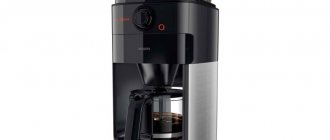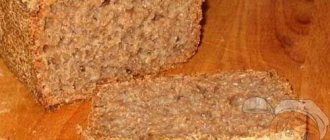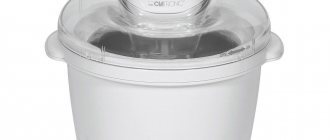Knowing how to grind coffee without a coffee grinder will be useful for every connoisseur of the aromatic drink. There can be many situations when you don’t have a special machine for grinding grains at hand, and understanding how to properly achieve the desired grinding using improvised means will help you find a way out of the situation.
The resin of coffee beans affects a number of indicators, ranging from the extraction process (transfer of trace elements and beneficial components) to strength, taste and aroma. If you study the labels on coffee packages, you can learn in advance about the grinding and preparation methods recommended by manufacturers. By following them, you will really be able to get a drink of the desired strength and taste.
Grinding Options: What You Need to Know
Even if you grind coffee without a coffee grinder, you can achieve the aromatic properties and taste of the bean oils contained in it. The choice of grind type affects how the drink is brewed. By adjusting its fineness, you can significantly influence the taste and quality of coffee. There are the following grinding options:
- thin;
- ultra-thin;
- rude;
- average;
- large;
- powder.
Coarse and coarse grinding does not guarantee the rich taste of the coffee drink and does not have the best effect on its strength. The richest and strongest coffee is obtained from beans ground into a fine powder. It is from this that aromatic espresso is prepared. On the other hand, grinding too fine is not suitable for all coffee makers. If a drip type machine is used, the resulting drink will have a bitter, burnt taste.
Those who like coarse grinding are recommended to use geyser-type coffee makers or French presses.
Medium grind coffee is also suitable for this type of machine. Fine grinding in these cases is undesirable, since the filter will fail faster due to fine grounds.
In general, it is the medium grind that is considered universal. It is suitable for most coffee machines and can be used for brewing in a Turk. Coffee beans ground in this way last longer and are suitable for preparing drinks in a variety of ways, from espresso to latte.
Coffee, ground into powder and ultra-fine grinding, is ideal for cooking in a cezve or Turk on sand. The famous Turkish drink, for example, is made from grains ground to a powder. But you won’t be able to grind coffee beans to this state without a coffee grinder.
You might be interested in How to choose a Turkish coffee pot
What options for manual grinding are used and is it possible to use improvised tools and devices to obtain coffee mass suitable for preparing the drink? There are several proven methods that allow you to grind coffee at home without machines.
Selecting the coffee grind level
The taste and aroma of a cup of coffee depends on the type of grinding. There are several of them:
- Coarse (coarse) – the grains look like sea salt. To achieve this consistency, turn on the coffee grinder for 10 seconds. And coffee is brewed 8 minutes after grinding. The powder is used to brew the drink in a French press.
- Medium – similar to sugar. Grinding time – 13 seconds. Combines with special coffee brewing methods - pour-over, Chemex, and suitable for geyser coffee makers. The drink should be prepared no later than 6 minutes after grinding.
- Fine - looks like coarsely ground powdered sugar, the device is turned on for 13 seconds. The crushed beans are used after 4 minutes in drip and cone devices.
- Espresso – the beans are ground for 20–25 seconds until the consistency of fine salt. Prepare in the espresso machine for 30 seconds.
- Ultrafine - the product is made to look like ground cinnamon. The powder is used for 40 seconds, the drink is prepared in a Turk or cup. Storage is not recommended.
The degree of grinding should correspond to the method of preparing coffee.
Mechanical salt and pepper grinder - an affordable alternative to a coffee grinder
Almost every home has a mechanical pepper mill, with which you can turn coffee beans into medium-grind powder in a short time and without visible effort.
A mill is used to grind small portions of beans, usually one or two cups. The advantage of this method is its simplicity and accessibility. In addition, you can always use freshly ground grains before brewing the drink.
The disadvantage is that coffee beans cannot be ground into fine powder or powder even if you pass them through the mill mechanism several times.
Types of coffee grinders
The taste of coffee is born in the coffee grinder, so the choice of the kitchen appliance we are considering should be approached with particular seriousness. There are three types of coffee grinders on the market, differing in appearance and control method:
- knife (rotary) type;
- millstone;
- manual.
The most common models are rotary-type devices; coffee is ground using rotary knives that rotate at high speed, crushing the aromatic beans. In this case, regulation of the degree of grinding depends on the duration of action of the rotary knives. That is, the more they rotate, the finer the grind. The main disadvantage of this method is the inhomogeneity of grinding. The capacity of knife cutlery is usually no more than 120 g.
Millstones use conical or cylindrical millstones. They function similar to a mill - the grains, falling between the millstones, are crushed and ground into small particles. The degree of grinding is independently regulated and depends on the distance between the millstones. In this case, the degree of grinding is quite uniform. The capacity of these models is up to 300 g of coffee beans. Among all coffee grinders, this type of device is the most popular.
The main advantage that distinguishes a burr coffee grinder from a rotary one is the presence of a container for ready-made ground coffee.
A manual coffee grinder is a great way to get the required portion of fresh, well-ground coffee. The manual version of the device consists of two millstones, one of which is attached to the bottom, and the second is rotated by a handle. The advantage of a coffee grinder is that you cannot “burn” the coffee in it. Pour in the beans, turn the handle and in 15-20 minutes you get ready-made coffee powder, which is poured into a specially designed container.
Advice. Do not use a coffee grinder to grind other foods to avoid introducing additional odors.
Blender - a universal kitchen assistant
A simple and effective way to grind coffee is to use a familiar blender with a universal set of functions. When choosing a device, you need to take into account the location of the knives - high from the blade of the wall. This fact affects the quality of grain grinding. Partially falling down, the grains fall apart, but do not grind.
The main difference between a blender and a coffee grinder is the location of the knives. Designed for torsion grinding, both machines operate on different principles. But despite the fact that the blender is aimed at processing products into a semi-liquid state, it will cope with grinding coffee beans if you do this procedure several times. The finer you can grind the beans, the more aromatic the resulting drink will be.
Can coffee beans be ground in a blender?
Coffee beans can also be ground in a blender. Rinse the blender jar thoroughly and dry it thoroughly. Place the beans in the bowl, cover it with a lid and run the blend at the lowest speed. Turn on the blender in 2 second intervals 4-5 times until you achieve the desired grind.
You can also use an immersion blender for grinding. While grinding, cover the glass with your hand to prevent the grains from flying out of it. The duration of the grinding interval here can be increased to 10–20 seconds.
The downside of using a blender to grind coffee is that the bean particles come out to be of different sizes. It is better to remove large grains and use them separately for brewing in a cup, and small ones - for a coffee maker or Turk.
Hammer and rolling pin - handy tools to help
Compared to all the options that allow you to grind coffee without a coffee grinder, a hammer is the simplest and most non-standard. It is used if it is not possible to use more convenient devices.
To obtain a powder suitable for brewing or steaming, in addition to a hammer, you will need thick paper. The coffee beans are wrapped in paper and tapped with a hammer, preventing the beans from scattering. The proven old-fashioned method will allow you to split the grains and prepare them for making an aromatic drink. You can try grinding well-roasted grains using the same paper and rolling pin.
You might be interested in Chemex for brewing coffee
How much to grind coffee for one cup
The volume of ground coffee per cup depends on the method of preparing the drink. So, if you are going to brew espresso using a coffee machine, then for this you need to take 7 grams of ground beans. This will make 30 ml of coffee. If you are preparing coffee in a Turk, then take about 6 grams per 60 ml. water. If we give average figures, then to prepare two servings of coffee you can take 12–15 grams of ground beans.
To dose grains, it is best to use a measuring spoon for bulk products. But if you don’t have it, then you can get by with a simple teaspoon or tablespoon. Their volumes are approximately as follows:
- Level teaspoon 3–4 g.
- Top teaspoon 6 g.
- Level tablespoon 11–12 g.
- Top tablespoon 17–18 g.
Mortar for grinding - a method proven over centuries
An even more ancient method of grinding coffee beans is a mortar. To achieve the desired result you will have to spend time and put in effort, but the effect is worth it. The process of grinding coffee this way is the most natural. This is exactly how our ancestors achieved the desired consistency of products in their time.
Today, grinding grains in this way is not only possible. The output will be a high-quality powder mixture, suitable for brewing a drink according to various recipes. To make it easier to regulate the degree of grinding, coffee beans are ground in small portions immediately before preparation.
Is it possible to grind coffee in a meat grinder?
To grind coffee, you can use a mechanical or electronic grinder. If the meat grinder has several interchangeable knives, choose the one that gives the strongest grinding.
Before grinding beans, thoroughly rinse the inside of the meat grinder. Pay special attention to hard-to-reach places, as food residues usually accumulate in them and the ground coffee can absorb their smell. After washing the grinder, give it time to dry thoroughly and only then start grinding coffee.
A meat grinder is a reliable and easy way to grind grains
Another noteworthy method for grinding coffee is using a meat grinder. Both electric and mechanical meat grinders are found in everyone’s home, so this method can be compared to using a blender in terms of efficiency, accessibility and speed of obtaining results.
Depending on the model of the device, you can select suitable knife options for different types of products. For example, modern machines always come with a set of knives for spices. They are ideal for grinding coffee beans, and if you run them through the mechanism twice or even three times, you can achieve a fine grind for espresso.
Before grinding beans, all parts of the meat grinder must be thoroughly rinsed, since the odors of previously ground products can get into the coffee if not properly processed.
So, if it is not possible to grind coffee beans in a special coffee grinder, to achieve the result you can use:
- mortar;
- blender;
- meat grinder;
- hammer or rolling pin;
- mechanical mill.
It is not so important which version of the device for resining grains was chosen, the main thing is the process itself, which for true connoisseurs of the aromatic drink resembles a ritual, unhurried, and enjoyable.
To make coffee especially tasty and rich, it is better to grind it right before preparation, preventing the aroma from evaporating. Store ground grains in vacuum packaging or in a container with a tight-fitting lid for no more than five days in a cool, dark place. Green coffee lasts longer than regular black coffee.
Manual methods
If there are no suitable mechanisms at hand or the electricity is turned off, then ordinary kitchen tools will help:
- mortar;
- rolling pin;
- hammer;
- big knife
Performing this operation with objects not suitable for this purpose requires caution. Be careful not to get injured.
Mortar
This kitchen accessory is sometimes used to grind small amounts of certain ingredients before cooking. Mortars are made from hardwood, ceramics, metal, and stone. They are convenient because they allow you to control the degree of grinding.
To grind coffee, use heavy tools made of stone or metal. Grinding sequence:
- A small amount of grains (1-2 tablespoons) is poured into the bowl.
- Using a pestle, pressing hard and turning, carefully grind each grain until large fractions are obtained.
- Large particles of coffee are crushed by crushing. To do this, apply short blows with a pestle.
- Crushing and grinding continue until a fine powder is obtained.
During chopping, with significant effort, there is a possibility of scratching the table surface. To prevent this from happening, place a piece of plastic or cutting board underneath.
rolling pin
A dough rolling tool will also help grind coffee beans in a pinch. In addition to the rolling pin, you will need a cutting board and a thick plastic bag. It would be good if there was a clasp on it.
A small amount of coffee is placed in a bag in one layer, which is placed on a cutting board. First, tap the rolling pin a little to break up the grains. And then they perform the same actions as when rolling out dough, only with more effort. If you try hard, you can get a medium or fine grind.
Hammer
Another alternative method is crushing with blows from a heavy object. You can grind coffee beans using a hammer. A cutting board is placed on the table. The grains are evenly placed in a thick plastic bag or between sheets of parchment paper. Everything is placed on a board and covered with a cloth or towel.
We take the instrument more comfortably in our hand. A kitchen hammer, mallet or, in extreme cases, a plumber's hammer will do. Grind with short, gentle blows until the desired fraction is obtained.
Knife
A large carving knife can also be used to crush coffee. To do this, the grains are placed on a cutting board and pressed on top with the flat side of the tool. The force is increased by placing the palm of your free hand on top. Moving from one group of grains to another, they gradually grind everything. The method is not easy, since not everyone has enough strength in their hands.
How to set the grind in the device
How to adjust the grind on a coffee grinder? Obviously, the type of coffee grinder matters. Each device has its own characteristics that should be taken into account before grinding grains.
- Manual coffee grinder. The principle of operation is based on the operation of two knives: one is fixed almost to the bottom of the container, the second is connected to the handle. You won’t be able to spoil the coffee with a manual device: the main thing is to observe the timing.
- Knife device. In such a coffee grinder, the beans are ground with knives operating at high speed. The longer the operating time, the finer the grind will be. To ensure a uniform consistency, do not grind more than 120 ml (about 8 tablespoons) of grains at a time.
- Millstone. These coffee grinders grind beans. The main thing you need to pay attention to is the distance between the knives. The smaller it is, the finer the grind will be.
Whatever coffee grinder you choose, the first times can be considered experimental. The ideal grind is often determined experimentally.
Grinding beans may seem like a hassle to some. But if you truly love coffee, such manipulations are definitely worth it. Do not deny yourself the pleasure of starting the day with a cup of invigorating aromatic drink.
Subscribe to our Social networks
Terms and rules for storing ground coffee
In this article, we told you how many seconds it takes to grind coffee beans for a carob coffee maker. They also explained the operating principles of this machine. However, it is worth touching on the topic of how to store grains.
The drink that is brewed from freshly ground fruits has the best taste. Therefore, experts advise grinding 10 minutes before cooking. But you can store ground grains for about six months . But during this time they usually lose some of their taste and aroma. Typically choose a dark and dry place to store coffee.











